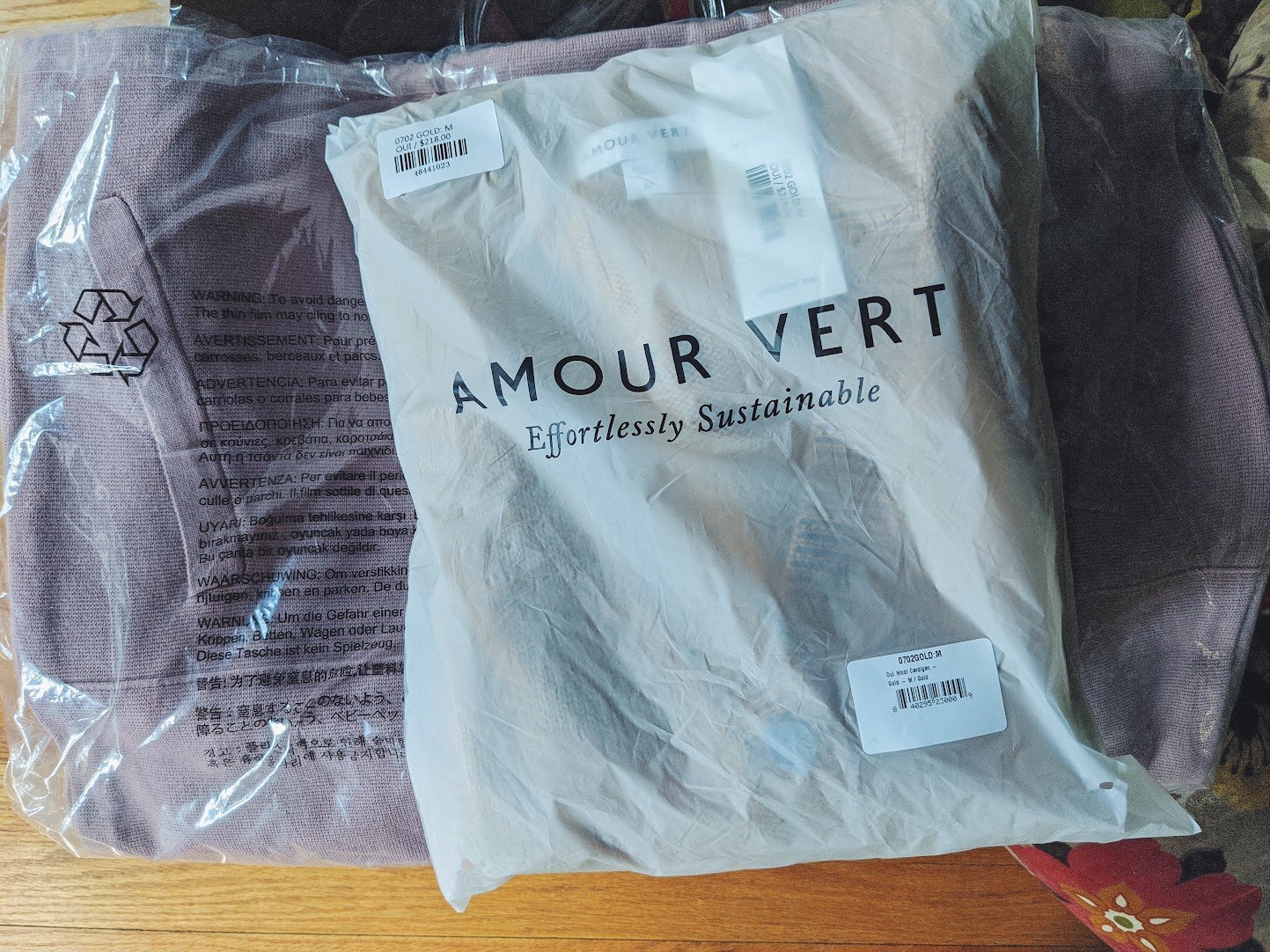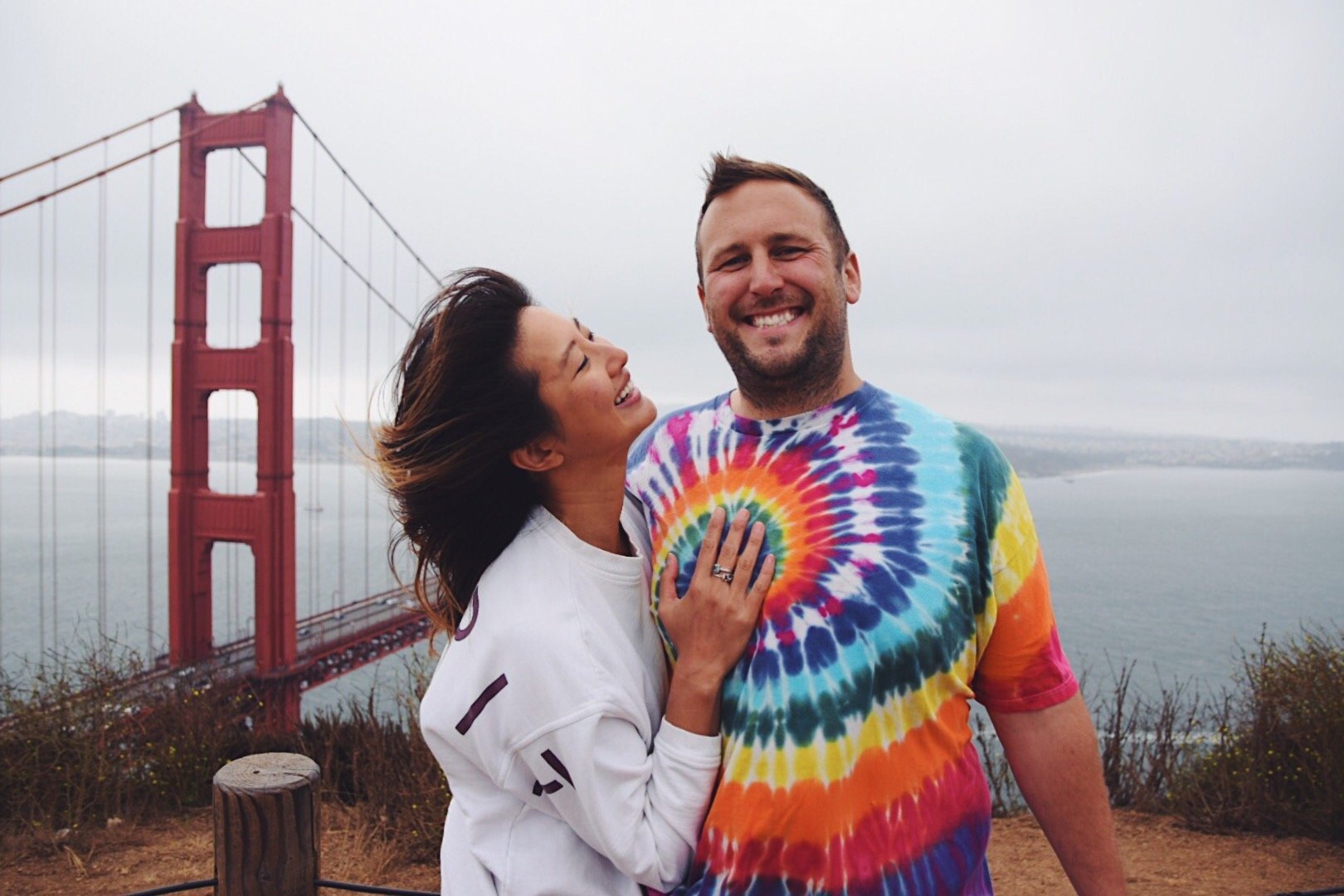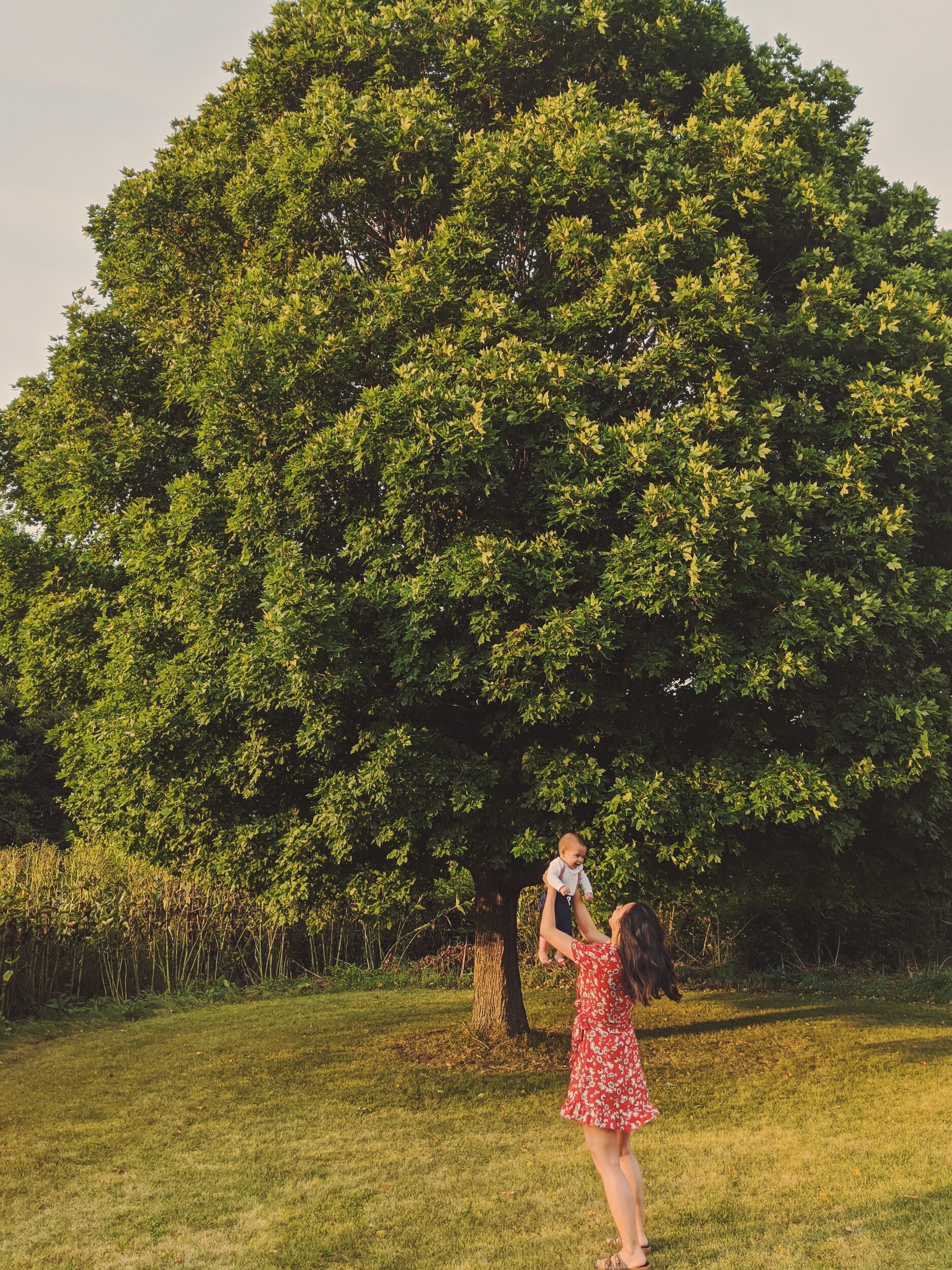“The most environmentally friendly product is the one I choose not to buy.”
This year, I’ve been on a quest to rid my closet of synthetic materials like polyester, acrylic, and rayon, and try to only wear natural fibers as much as possible. Natural fibers like cotton, hemp, and wool.
My quest began while folding laundry. Shaking out clothes before folding them, I sneezed at the lint that floated about. That got me thinking about what the lint was made of, what my clothes were made of. The more I thought about wearing synthetic materials, the more I realized the microplastic they shed. Microscopic pieces of plastic are in the dust we breathe, in the washer where materials rub and wear against each other, and in the tap water we drink. This is one of the harmful side effects of our fast fashion industry. Fast, cheap clothing is most likely made of fast, cheap materials.
I’ve taken a good hard look at my closet and discovered that most of it is synthetic. All of my leggings are made from polyester. All of my dresses are made from polyester, rayon, or viscose. All of my underwear and bras consist of spandex or nylon. All but one pair of jeans have elastane. Most of my sweaters have some percentage of acrylic. The only items in my closet made of 100% cotton are my t-shirts and even then, their tags are made of polyester.
In an effort to transform my toxic wardrobe into a more intentional one, I’ve learned the hard way that so-called “sustainable” brands sell clothing made of synthetic fibers, ship in plastic packaging, and create waste. This is my cautionary tale that even “sustainable” brands promote some level of greenwashing.
In my mind, a truly “sustainable” brand does two things:
Eliminates plastic from every aspect of its product lifecycle, from creation to end-of-life. It ships plastic-free and is responsible for keeping the product out of landfills and oceans.
Refuses to sell synthetic materials - materials that are known to be toxic and non-biodegradable. I know it’s difficult to make stretchy clothing without elastane/lycra/spandex but I call upon brands to innovate in this space.
I highlight below “sustainable” brands I’ve purchased from over the past few years - what I love and didn’t love about them. They all partake in greenwashing in some way. This blog post isn’t meant to make anyone feel bad. Instead, I hope it helps us think more deeply about the clothes we purchase.
Amour Vert
What they promote (on their website):
We are green love. Our sustainable practices address all aspects of our business operations and the full lifecycle of the garment: the fibers and production processes used, how workers are treated, how it gets to the consumer, and finally—whether it can be recycled or is forced into a landfill.
The pros:
Classic, minimalist designs. I love that I can find pieces made from 100% certified organic cotton. Some of their products ship in compostable bags.
The cons:
While some of their products ship in compostable bags, many are still shipped in plastic bags. Though these plastic bags are “recyclable”, people rarely do, in fact, recycle them. And like many clothing brands, their clothes come with plastic tags and fasteners which again, they say is “recyclable” but isn’t really. Even if a material is “recyclable”, brands aren’t truthful about whether it’s accepted in most municipalities and aren’t held accountable for material actually being recycled. The likelihood of a tiny tag fastener being recycled is slim to none.
Everlane
What they promote (on their website):
We all leave an impact on the planet, so we should all play a part in cleaning up our footprint. Businesses especially must help lead the way. At Everlane, we are working to do our part by building an ethical supply chain that creates high-quality, low-impact, long-lasting products. We carefully consider our materials and work with our production partners to reduce waste, chemicals, and plastics that endanger our planet’s ecosystems. Our timeless basics are designed to last—so making the right choice by the planet can be as simple as putting on a T-shirt.
The pros:
Classic, minimalist designs. I love that I can find pieces made from 100% certified organic cotton.
The cons:
I have two main issues. Firstly, the items I ordered came in plastic bags. Even though they say their bags are made from recycled plastic, the truth is that people rarely recycle plastic again, particularly bags. Secondly, the pair of jeans I purchased came with plastic fasteners that attached a tag to one of the back pockets. I hate plastic fasteners. They quickly become smaller pieces of plastic and can’t be recycled because of their tiny size.
MATE the Label
What they promote (on their website):
MATE is a Clean Essentials brand made sustainably in Los Angeles with non-toxic, natural and Organic materials.
The pros:
There is zero plastic with a MATE purchase. It’s the only clothing brand I’ve found to be completely plastic-free, from the packaging to the tag fasteners (they use metal safety pins). Even the tags on the clothing are made from cotton, which I absolutely love because it frustrates me when brands say a piece of clothing is 100% cotton but the tag is made out of polyester.
The cons:
The only con is how expensive the items are. But, I understand why. Given that they only make their clothing from organic materials and maintain a local supply chain, you pay for quality over quantity.
PACT
What they promote (on their website):
Our mission is to build Earth’s Favorite Clothing Company.
The pros:
Affordable organic clothing.
The cons:
New clothing still comes in plastic bags. Plus, the pieces I purchased were not the highest quality or the best fit. And despite their company slogan, the leggings I purchased were 92% organic cotton and 8% elastane. Elastane is still a synthetic fiber that sheds microplastic over time.
Reformation
What they promote (on their website):
Up to 2/3 of the sustainability impact of fashion happens at the raw materials stage - before the clothes have actually been made. Fiber selection also affects how you’re gonna wash the garment, and potentially recycle it one day - both important factors to consider when it comes to the environmental impact. That’s why we have Ref standards, or basically different classifications based on their combined social and environmental impact.
The pros:
Beautiful prints and unique designs. The items ship plastic-free.
The cons:
Many of their pieces are made of synthetic materials like spandex or, they are upcycled from extra fabric of unknown materials. While I love the idea of upcycling, I’m uneasy about not knowing what the materials are. And like Everlane, every item came with a plastic price tag fastener.
thredUP
What they promote (on their website):
At thredUP, we believe in a sustainable fashion future. Thrifting is about more than just finding amazing deals on your favorite brands. It’s about shopping with intention, rejecting throwaway fashion culture, and standing for sustainability. The clothes we wear have the power to create change.
The pros:
I love that I can filter my search by material type. They also offer a free kit to send gently used items back to them for resale.
The cons:
I have two gripes. Firstly, they ship in plastic bags. Secondly, the material type can be incorrectly labeled. I was really sad to purchase what I thought was a 100% cotton romper only to receive it and read viscose on the tag.
The RealReal
What they promote (on their website):
We’re empowering consignors and buyers to extend the life cycle of luxury goods. The future of fashion is circular.
The pros:
I love that they offer secondhand, harder-to-find items.
The cons:
The items came shipped in plastic.
The bag and plastic tags Everlane uses for new purchases
Both bags are from Amour Vert: the top one is compostable; the one underneath is not
Mate’s journey to be plastic-free









